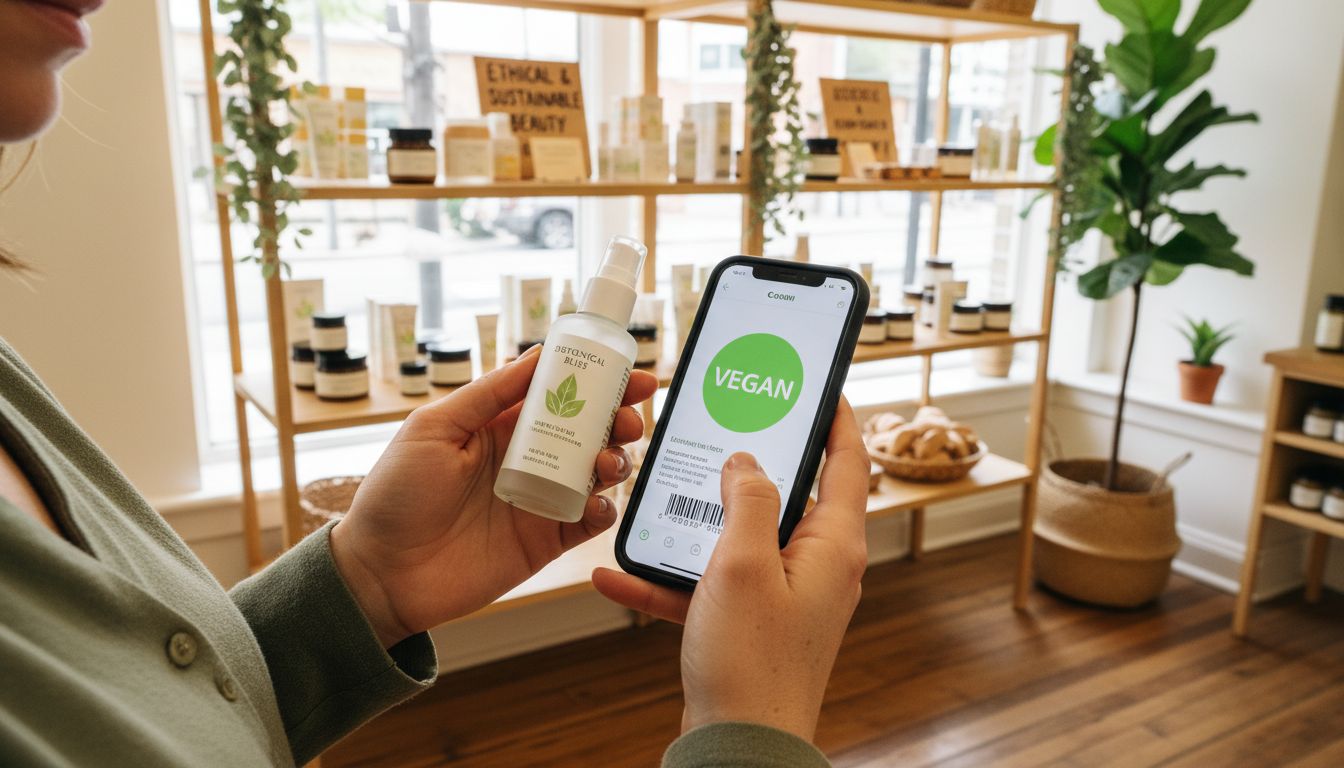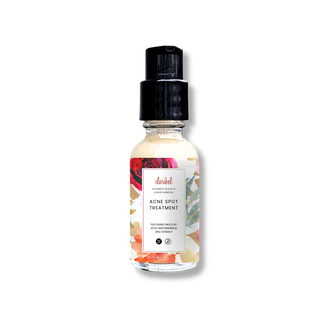More than 60 percent of consumers express confusion when trying to find truly vegan skincare. Sorting fact from clever labels is not easy with so many ingredients and promises competing for your attention. Whether your goal is healthy skin or a clear conscience, knowing exactly how to choose vegan skincare products puts control back in your hands. This practical guide shows how to identify your unique needs, spot hidden animal ingredients, and build a routine you can trust.
Table of Contents
- Step 1: Identify Your Unique Skin Type And Needs
- Step 2: Check Ingredient Lists For Vegan Purity
- Step 3: Verify Cruelty-Free And Clean Product Standards
- Step 4: Evaluate Active Ingredients For Effectiveness
- Step 5: Test Products And Monitor Your Skin’s Response
Quick Summary
| Key Point | Explanation |
|---|---|
| 1. Identify Your Skin Type | Assess your skin through a simple home evaluation to determine whether it’s dry, oily, combination, or sensitive. |
| 2. Check Ingredient Lists Carefully | Be vigilant about reading ingredient lists to avoid animal-derived components, ensuring products are truly vegan. |
| 3. Verify Cruelty-Free Certifications | Look for recognized cruelty-free certifications to ensure products have not been tested on animals during their production. |
| 4. Match Active Ingredients to Needs | Research and choose active ingredients tailored to your specific skin concerns, like hydrating or soothing properties. |
| 5. Test Products Systematically | Introduce new products slowly and monitor reactions through patch tests, keeping detailed notes on your skin’s response. |
Step 1: Identify Your Unique Skin Type and Needs
Understanding your specific skin type is the foundational step in creating an effective vegan skincare routine. According to The Skin Institute, there are five primary skin types: normal, oily, dry, combination, and sensitive—each with distinct characteristics that require specialized care.
To accurately determine your skin type, start with a simple home assessment. Begin by washing your face with a gentle cleanser and wait about an hour without applying any products. Then examine your skin closely. If your skin feels tight and potentially flaky, you likely have dry skin. Skin that appears shiny and feels greasy suggests an oily skin type. A combination skin type will show oiliness in the T zone (forehead, nose, chin) while remaining dry in other areas. Sensitive skin might react with redness, itching, or irritation when exposed to new products or environmental changes.
For the most precise diagnosis, Santa Barbara Skin Care recommends consulting a trusted skincare expert, esthetician, or dermatologist who can provide an assessment and help you develop a personalized skincare approach tailored to your unique needs.
Once you understand your skin type, you can select vegan skincare products specifically formulated to address your individual concerns and promote healthy, radiant skin. The next step involves researching ingredients that work best for your specific skin profile.
Step 2: Check Ingredient Lists for Vegan Purity
Ensuring the purity of your vegan skincare products requires careful examination of ingredient lists. According to Cruelty Free, consumers need to be vigilant about identifying animal-derived ingredients that can sneak into seemingly natural products.
Start by understanding common non vegan ingredients to avoid. Watch for animal-based substances like beeswax, carmine, honey, lanolin, collagen, and glycerin derived from animal sources. As PETA cautions, terms like “no animal ingredients” can be misleading, so you must carefully read each ingredient. Look for clear vegan certifications or symbols that guarantee the product contains zero animal-derived components. Digital resources and smartphone apps can help you quickly decode complex ingredient lists by identifying potential animal-based substances.

A helpful pro tip is to familiarize yourself with scientific and chemical names of animal-derived ingredients.
Some complex names might not immediately reveal their animal origins. When in doubt, choose brands that are transparent about their ingredient sourcing and have clear vegan commitments. Reading vegan skincare tips can provide additional guidance on navigating product selections with confidence. Your next step involves understanding how these ingredients interact with your unique skin type.
Step 3: Verify Cruelty-Free and Clean Product Standards
Verifying cruelty-free and clean product standards is a critical step in selecting ethical vegan skincare. According to Cruelty Free, consumers can support compassionate brands by identifying companies that have committed to avoiding animal testing throughout their entire production process.
To effectively verify product standards, look for recognized certification logos from organizations like PETA, Leaping Bunny, or Choose Cruelty Free. These certifications guarantee that neither the final product nor its individual ingredients have been tested on animals. Cruelty Free advises being cautious of misleading marketing claims and recommends thoroughly investigating a brand’s animal testing policies. Some brands claim to be cruelty-free but may still source ingredients from suppliers who conduct animal testing, so dig deeper than surface level marketing.
A helpful pro tip is to research brands that have official statements of assurance or badges of trust related to their commitment to ethical practices. Explore cruelty free beauty resources to understand the nuanced world of ethical skincare. Your next step involves understanding how these ethical standards translate into product quality and effectiveness.
Step 4: Evaluate Active Ingredients for Effectiveness
Selecting vegan skincare products with potent active ingredients requires strategic research and understanding. According to Serum, powerful natural ingredients like aloe vera, collagen, and hyaluronic acid can address specific skin concerns when chosen thoughtfully.
Start by matching active ingredients to your unique skin needs. Hyaluronic acid works wonders for hydration, while aloe vera soothes sensitive skin. Santa Barbara Skin Care recommends consulting a dermatologist to precisely identify which ingredients will most effectively target your individual skin challenges. Look for ingredients that are scientifically proven and have clear documentation of their benefits. Vegan skincare often includes plant based alternatives like bakuchiol instead of retinol or sea buckthorn instead of synthetic emollients.
A pro tip is to introduce new active ingredients gradually and patch test before full application. For comprehensive insights into selecting the most appropriate ingredients for your skin, explore our guide to active skincare ingredients. Your next step involves understanding how these ingredients interact and create synergistic effects in your skincare routine.
Step 5: Test Products and Monitor Your Skin’s Response
Testing new vegan skincare products requires a thoughtful and systematic approach to ensure optimal results and minimize potential skin reactions. According to Santa Barbara Skin Care, developing a personalized approach to product testing is crucial for understanding how your unique skin will respond to new formulations.
The Skin Institute recommends a careful method of observing skin responses through visual and tactile examination. Start by performing a patch test on a small area of skin like the inner forearm. Apply a minimal amount of product and wait 24 to 48 hours to check for any signs of irritation such as redness, itching, swelling, or burning sensations. Keep a detailed journal tracking the products you test, noting application date, location, and any skin changes. Watch for both immediate and delayed reactions that might indicate sensitivity or allergic response.
A pro tip is to introduce only one new product at a time and wait at least two weeks before adding another to accurately identify its specific impact. For a comprehensive understanding of managing your skincare routine, explore our step by step facial care guide. Your next step involves fine tuning your routine based on these careful observations and maintaining consistent skin health.
Discover Vegan Skincare That Truly Matches Your Skin’s Needs
Choosing the right vegan skincare can feel overwhelming when you are trying to find effective products without harmful fillers or toxic chemicals. If you struggle to identify products that fit your unique skin type like oily or sensitive or are concerned about cruelty and ingredient purity this is your chance to find clear solutions. Our collection at Oily and Sensitive categories features clean, vegan, and cruelty-free formulas designed to work harmoniously with your skin’s natural balance.
Begin your journey to radiant, healthy skin today with trusted vegan options that prioritize your needs. Experience the confidence of products with potent active ingredients and zero fillers shipped free across the US. Explore our full range now at Claribelskincare.com and take the first step toward a clearer, glowing complexion.
Frequently Asked Questions
How can I identify my unique skin type for vegan skincare?
Understanding your skin type is crucial for choosing appropriate vegan skincare. Start by washing your face and waiting an hour to observe how your skin feels—tightness suggests dry skin, while shininess indicates oily skin. Categorize your skin as normal, oily, dry, combination, or sensitive based on these observations.
What common non-vegan ingredients should I avoid in skincare products?
Look out for animal-derived ingredients such as beeswax, carmine, and lanolin in your skincare products. Always read ingredient lists carefully and avoid products that do not clearly specify their vegan status. Getting familiar with common terms will help you make informed choices.
How do I verify if a skincare product is truly cruelty-free?
Check for certification logos from recognized organizations that guarantee products are not tested on animals. Look for labels like PETA or Leaping Bunny on the packaging to ensure ethical standards are maintained during production. This verification process will take just a few moments but ensures your purchase aligns with your values.
What active ingredients should I look for in vegan skincare?
Choose effective active ingredients based on your specific skin needs—hyaluronic acid is great for hydration while bakuchiol serves as a vegan alternative to retinol. Research these ingredients and ensure they are known for their effectiveness on your skin type. Aim to select products that include scientifically supported active ingredients to maximize results.
How should I test new vegan skincare products for reactions?
Begin with a patch test by applying a small amount of the product to the inner forearm and waiting 24 to 48 hours for any reaction. Document your observations to track any irritation or sensitivity. Testing one product at a time will provide clearer insights into how each item affects your skin.
What steps should I take to monitor my skin’s response to new products?
Keep a detailed journal of the products you use, noting their application dates and any skin changes. Regularly assess your skin for reactions and adjust your routine accordingly, aiming to make changes only every couple of weeks. This approach allows you to fine-tune your skincare process for optimal results.






